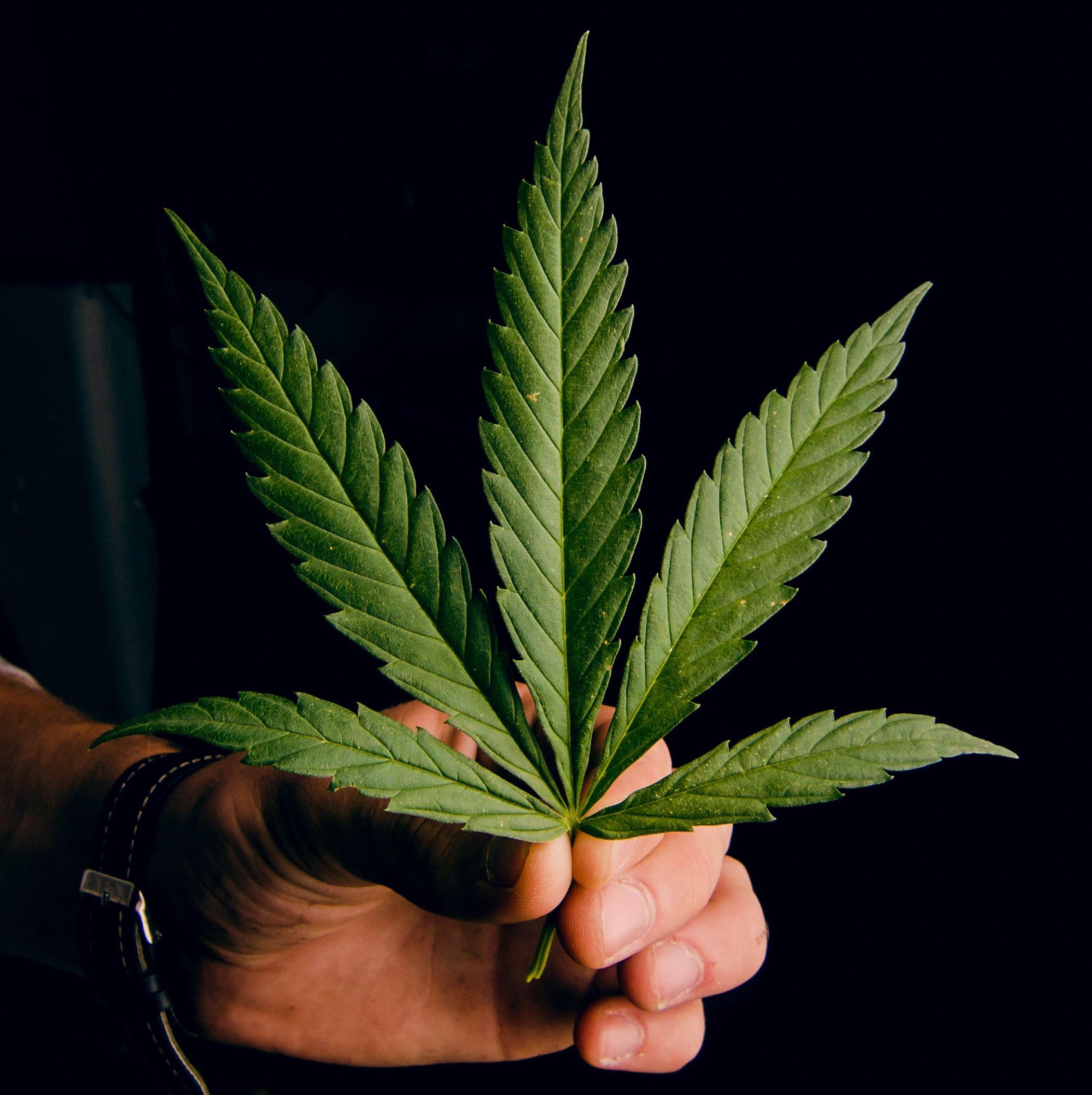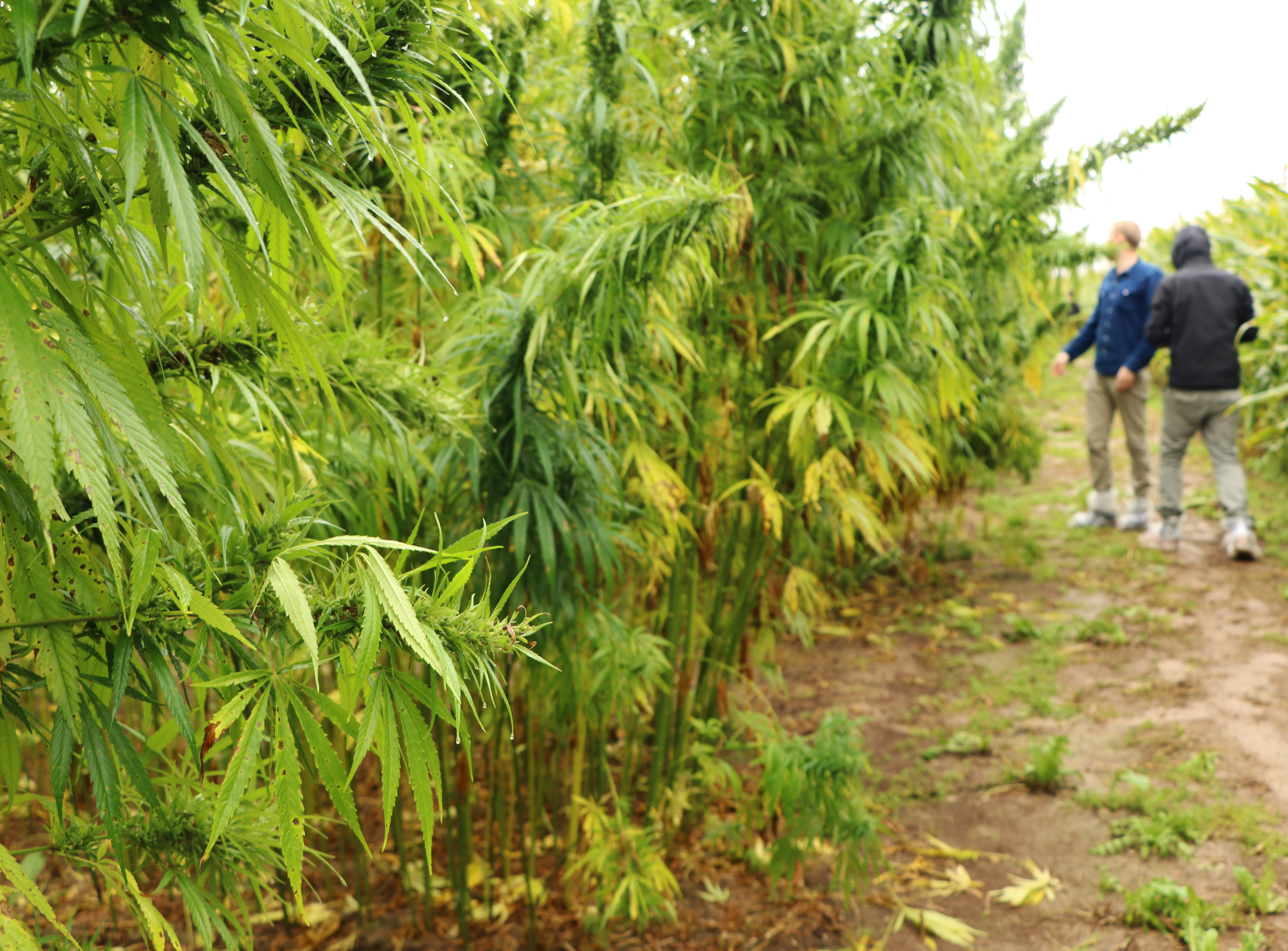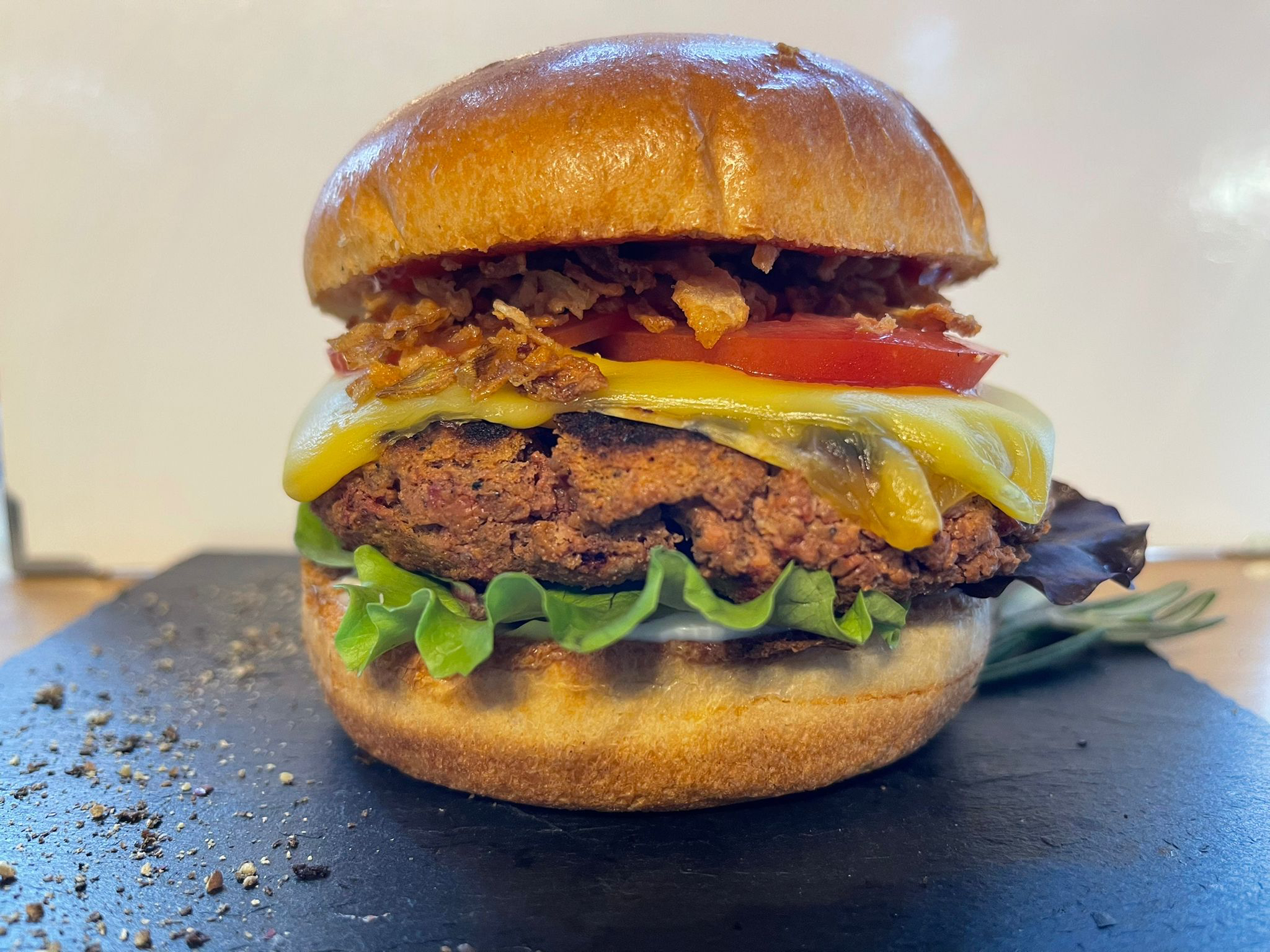Main navigation
Hemp: regional superfood and valuable source of protein
If there were a competition for the ‘crop of the future’, hemp would certainly be at the top. Not because of the intoxicating effect of some hemp varieties, which is what probably automatically comes to mind for many readers. In future, cannabis has the potential to help supply protein in the quantities required by a growing world population – and it can do this in a particularly sustainable way. The TASTINO project brings together researchers from academia and industry to work on ways to make the regional superfood available as vegan schnitzel, pasta and other foodstuffs.
Hemp – which belongs to the cannabis family – is an annual, rather inconspicuous plant that can grow up to several metres in height given favourable conditions. As one of our oldest agricultural crops, hemp grains have been used as food or fibres for textiles and ropes for thousands of years. Its therapeutic effect on various diseases is also known and is subject to intensive research worldwide.
However, hemp is probably best known as a drug that makes you high. The main psychoactive ingredient, 9-tetra-hydrocannabinol (THC), of the cannabis plant is the most commonly consumed illicit drug in the world. However, the THC content is not the same in all cannabis varieties: while it is usually well above 0.2 percent in medicinal hemp, industrial or commercial hemp contain lower THC quantities. Nevertheless, the cultivation and use of hemp in Germany is generally only permitted under strict conditions.
High-quality and sustainable food – also for allergy sufferers

At the University of Hohenheim, the potential of hemp, which is inconspicuous in appearance only, was recognised years ago and has since been the subject of various research projects. In the CANNABIS-NET project, for example, the university is working with small and medium-sized companies to develop processes for cultivating medical hemp in Germany in the future and making high quality hemp available to the pharmaceutical industry. This work has recently been complemented by another extremely promising idea: producing food from commercial hemp. In the TASTINO project ‘SchniTzel, Hanftofu, PASTa & Co aus dem Reallabor Hanf - proteINbasierte Lebensmittel aus regiOnalem Hanfanbau’ (SchniTzel, Hemp Tofu, PASTa & Co from Real Lab Hemp - Protein-based Food from Regional Hemp Cultivation), the aim is to develop hamp grains as a new source of protein for human nutrition in collaboration with the Pforzheim-based company Signature Products.
The starting point for the project was a call for proposals by the Baden-Württemberg Ministry of Food, Rural Areas and Consumer Protection (MLR) that focused on ‘Bioeconomy - Real Laboratories for Closing Regional Material Cycles and for Sustainable Supply of Nutrients and Proteins from the Region’. "As far as food is concerned, the planet is fast approaching capacity and we need to rethink in many directions," says Prof. Dr. Simone Graeff-Hönninger, who leads the work in the Cultivation Systems and Modelling Group at the University of Hohenheim. "We've known this for quite some time, and plant sources do exist. But these also have disadvantages: cereals or lupine, for example, can be problematic for allergy sufferers, and soya is subject to the genetic engineering hurdle. And in general, the texture is not considered very meat-like. Therefore, it seemed obvious to us to establish hemp as a valuable and sustainable future protein source. Especially as the market for plant-based alternatives will be subject to strong future growth."
No plant protection measures necessary

However, it is not only availability that requires a rapid global change in diets: the consumption of meat and other animal-derived foods in their current quantities is considered unhealthy and production is unsustainable. Hemp proteins, on the other hand, are extremely nutritionally valuable and can therefore play a significant role in human nutrition: with 23 essential amino acids and a high proportion of omega-3 and -6 fatty acids, they are characterised by a high biological value and can be produced locally. Moreover, almost no plant protection measures are needed for hemp cultivation: it grows very quickly, weed growth is quickly suppressed and fungicide use against diseases has not played a role so far. A large root volume stores CO2 in the soil, cultivation is also possible on relatively barren land, and the flowers make a valuable contribution to biodiversity as a source of pollen.
"However, due to bureaucratic hurdles, the vast majority of hemp is currently imported," reports Graeff-Hönninger. "There are companies that would like to buy hemp from Germany. However, here in Germany farmers who wish to grow hemp have to formally file land use applications for this purpose – no matter whether this concerns a large or small plot - and are inspected on a regular basis. The entire crop must be destroyed as soon as the THC content rises even marginally above 0.2 percent due to possible environmental influences. This is not only a bitter pill for the farmer to swallow, but also for the processor, who is left without raw material. In other countries, there are no such hurdles, and even a change in the THC content to 0.3 percent – as currently proposed by the European Union's Common Agricultural Policy (CAP) from 2023 – would provide us with a completely different range of hemp varieties."
Ideal target: multipurpose plant
In order to establish significant hemp production in Germany, cultivation systems are now being developed at the University of Hohenheim to help farmers achieve a secure yield and give food producers a reliable supply of raw material to ensure that high-quality products are available at the end of the value chain. An initial issue being worked on at the university's experimental stations is the differences between hemp varieties and their ingredients. "We grew different hemp varieties in 2021 and are now evaluating their quality," explains the professor. "This should result in the recommendation of particular varieties to use in practice. And we are working with farmers to investigate various locations in Baden-Württemberg for suitability for hemp cultivation. So far, there are no comparable studies in which different hemp varieties have been grown at a single location under the same climate conditions."
While the main focus of hemp variety breeding has so far been on fibre utilisation, this is being expanded to include the possibility of using hemp grains as a plant protein source, which may require completely different conditions. Theoretically, according to the EU variety list, farmers have about 70 hemp varieties available. "In practice, however, you can't get hold of all the varieties," says Graeff-Hönninger. "Hemp seed is scarce and the quality is not always satisfactory."
As part of the TASTINO project, the hemp grains harvested in 2021 are currently undergoing comprehensive analysis to determine, among other things, the amino acid profile and the protein content. Another aspect is the fullest possible utilisation: "Our ideal goal would be a ‘multipurpose plant’ that we can use holistically. Meaning for producing fibres, extracting cannabinoids from the leaves as well as lignin extraction. But it is not yet clear whether there are hemp varieties that are suitable for this multiple use."
Hemp foods are well-received

Once the hemp grains have been harvested, the oil is pressed out and the proteins extracted from the press cake. The powder is then used as a basis for product development by hemp specialist Signature Products GmbH, which is concentrating on the development and testing of schnitzels, burgers, spreads, energy balls, protein shakes and more. The company also likes to present its diverse new creations on social media: "The response is unbelievable – it only takes a few hours for the first comments and enquiries to come in. We’re clearly hitting a nerve. The current hype about hemp makes it easy for us," reports the professor.
The contact with consumers is to be supplemented by surveys and tasting campaigns in restaurants. Food retailers in Baden-Württemberg are also involved. The project partners hope that the value chain will have come full circle by the time the project ends in December 2022 and that some innovative food products based on hemp protein will already have reached the consumer.